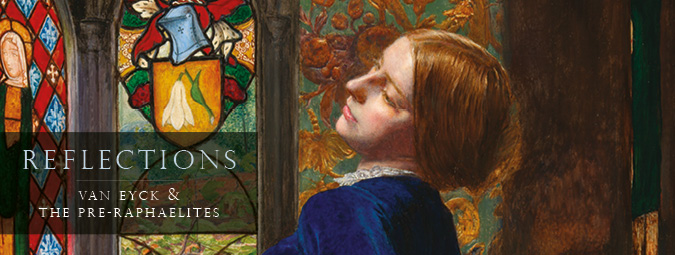The 'Arnolfini Portrait' acquisition
In 1842 the National Gallery trustees succeeded in obtaining a grant from the government of 600 guineas to purchase van Eyck’s ‘Arnolfini Portrait’, an oil painting which was signed by the artist dated 1434 and in excellent condition. It was owned by Colonel James Hay, who had served in the war against Napoleon in Spain, where the painting had been for much of its history.
In 1843 the painting was put on display and caused considerable comment in the press. It was not at the time known who was represented, and several theories arose as to the possible narrative of the painting. One suggestion was that it showed a man marrying his pregnant girlfriend, ‘making an honest woman of her’. Another was that the man was a palmist, reading the fortune of the woman.
Today the painting is believed to represent Giovanni Arnolfini and his wife, an Italian merchant family in Bruges, where van Eyck worked. Her bulky fur-lined dress gives the impression of pregnancy, but is simply the fashion of the time. The room in which they stand is full of expensive items such as oranges, the brass chandelier, and the bed – a normal feature of living rooms then. In the centre of the painting are its two most striking features: van Eyck’s signature, declaring he has been here, 'Johannes de eyck fuit hic/. 1434', in the manner of graffiti, and the convex mirror. Surrounded by small glazed scenes of Christ’s Passion, it shows two figures entering the room, apparently to be greeted by Arnolfini. One may be the artist himself.

